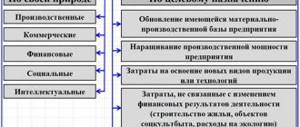What is the Money Market?
Money market refers to the trading of very short-term debt investments.
At the wholesale level, it involves large transactions between institutions and traders. At the retail level, they include money market mutual funds purchased by individual investors and money market accounts opened by bank customers. In all these cases, the money market is characterized by a high degree of security and relatively low profitability.
Key points
- The money market involves the buying and selling of large quantities of very short-term debt products, such as overnight reserves or commercial paper.
- An individual can invest in the money market by purchasing a money market mutual fund, purchasing a Treasury bill, or opening a money market account at a bank.
- Money market investments are characterized by safety and liquidity, and money market fund shares are priced at $1.
Analysis of the effectiveness of financial investments
Evaluating the effectiveness of financial investments is carried out according to the same principles as any other qualitative or quantitative analysis. It is based on profitability, that is, the ratio of the useful result (income) to the costs incurred (the amount of investment).
Investment financing, however, has a number of specific features. The simplest valuation method is used to determine the effectiveness of investments in bonds and some types of preferred shares, since they are fully or partially guaranteed by fixed interest rates. The situation is more complicated with ordinary shares, since their rate is subject to the fluctuating market relationship between supply and demand. The return on investment in shares is calculated using the formula:
Where: D – income for the investment period; CP – purchase price of one share; CR – selling price of one share; D – dividends per share for the investment period; K – the number of these shares in the portfolio.
The market price of a share on the stock exchange is largely determined by the reputation of the issuer and the general dynamics of the company's development. Its forecasting is based on the expected level of interest and its size in previous periods. Mathematical methods for estimating investment returns are also based on the investor's strategy - whether he intends to speculate on shares or own them and receive dividends. Investment efficiency is determined by the formula:
Where: E – efficiency; DG – annual dividend in monetary terms per share; CP – purchase price of one share.
The most important indicator that influences the forecast and, as a consequence, the investor’s decision to purchase securities of an enterprise, is the coefficient of financial stability of investment coverage. It reflects the ratio of the amount of equity capital and its long-term liabilities to the total price of the object:
Where: KFUPI – coefficient of financial stability of investment coverage; SK – own capital of the enterprise; DO – the amount of its long-term liabilities; OKP is the total capital of the enterprise.
The more the value of the financial stability coefficient moves away from the equilibrium condition, at which KFUPI is equal to 0.7-0.9, the worse it is, and in any direction.
It is clear from the formula that an object, the capital of which is largely represented by borrowed funds, and whose assets are characterized by low liquidity, has low investment attractiveness. In this case, the coefficient will go down.
On the other hand, too high a value of KFUPI indicates the inability of the enterprise’s management to attract borrowed capital, which should alert a potential financial investor.
Understanding the Money Market
The money market is one of the pillars of the global financial system. It involves swapping huge amounts of money between banks and the US government overnight. Most money market transactions are wholesale transactions that occur between financial institutions and companies.
Institutions that participate in the money market include banks, which make loans to each other and to large companies in the eurocurrency and time deposit markets; companies that raise money by selling commercial paper on the market, which can be purchased by other companies or funds; and investors who buy bank CDs as a safe place to store money in the short term. Some of these wholesale deals end up in the hands of consumers as components of money market mutual funds and other investments.
In the wholesale market, commercial paper is a popular borrowing mechanism because interest rates are higher than bank time deposits or Treasury bills and a wider range of maturities are available, from overnight to 270 days.1 However, the risk of default for commercial paper is significantly higher than for banking or government instruments.
Individuals can invest in the money market by purchasing money market funds, short-term certificates of deposit (CDs), municipal bills, or U.S. Treasury bills. For individual investors, the money market has retail outlets, including local banks and the U.S. government's TreasuryDirect website. Brokers are another way to invest in the money market.
The U.S. government issues Treasury bills in the money market with maturities ranging from a few days to one year.2 Primary dealers buy large quantities of them directly from the government to trade among themselves or to sell to individual investors. Individual investors can buy them directly from the government through its TreasuryDirect website or through a bank or broker. State, county, and municipal governments also issue short-term bills.
Money market funds seek stability and security with the goal of never losing money and maintaining a net asset value (NAV) of $1. This one dollar NAV base gives rise to the phrase "break the dollar", meaning that if the value falls below the $1 NAV level, part of the original investment will disappear and investors will lose money. However, this scenario is very rare because many money market funds are not FDIC insured, meaning money market funds can still lose money.
What are financial investments and how do they differ from real ones?
The definition of investment as investing funds for the purpose of their growth is valid for both types. Everyone really strives to make a profit. Then the differences begin. Real investments include investments:
- in creating a new business;
- into one’s own or someone else’s enterprise in order to increase its efficiency or expand (intensive and extensive);
- in personnel training;
- to finance other similar programs.
Summarizing the above examples, we can formulate the following definition: real investments are investments of funds with the aim of increasing the fixed capital of an enterprise.
They can take various forms (financing scientific research, providing technological innovation, acquiring tangible and intangible assets, etc.), representing investments of money, property or ownership rights.
At the same time, the investor always knows for what purposes the capital provided by him is spent and can demand a report on its use.
Financial investment includes the following possible measures taken to make a profit:
- acquisition of gold and foreign exchange assets;
- placing funds on bank deposits;
- purchase of valuable items that demonstrate an increase in value (hoarding);
- operations on the stock market.
The concept of financial investment implies the investment of free capital not in a specific enterprise and its assets, but in a certain financial instrument that provides profitability.
Types of Money Market Instruments
Money Market Funds
The wholesale money market is limited to companies and financial institutions that lend and borrow amounts ranging from $5 million to more than $1 billion per transaction. Mutual funds offer baskets of these products to individual investors. The net asset value (NAV) of such funds is expected to remain at $1. During the 2008 financial crisis, one fund fell below this level.3 This caused market panic and a mass exodus. funds, which ultimately led to further restrictions on their access to riskier investments.
Money Market Accounts
Money market accounts are a type of savings account. They pay interest, but some issuers offer account holders limited rights to withdraw money or write checks on the account. (Withdrawals are limited by federal regulations. If they are exceeded, the bank immediately transfers them to a checking account.) Banks typically charge interest on a money market account on a daily basis and credit the account monthly.
In general, money market accounts offer slightly higher interest rates than standard savings accounts. But the rate differential between savings accounts and money market accounts has narrowed significantly since the 2008 financial crisis. Average interest rates on money market accounts depend on the amount deposited. As of as of August 2021, the highest paying money market account with no minimum deposit offered 0.99% APY.4
Brief information
Funds in money market accounts are insured by the Federal Deposit Insurance Corporation (FDIC) at banks and by the National Credit Union Administration (NCUA) at credit unions.
Certificates of Deposit (CDs)
Most certificates of deposit (CDs) are not strictly money market funds because they are sold for terms of up to 10 years.
However, CDs are available with a term of three to six months. As with money market accounts, larger deposits and longer terms earn higher interest rates. August 2021 rates for twelve-month CDs ranged from 0.5% to 1.5% depending on the size of the deposit.5V Unlike a money market account, the rates offered with a CD remain the same for the duration of the deposit. There is a penalty for early withdrawal of funds deposited in a CD.
Bill of exchange
The commercial paper market is designed to buy and sell unsecured loans to corporations in need of a short-term cash infusion. Only highly creditworthy companies participate, so the risks are low.
Bankers' acceptances
The acceptance is a short-term loan that is guaranteed by the bank. Banker's acceptance is widely used in foreign trade, it is similar to a dated check and serves as an assurance that the importer can pay for the goods. There is a secondary market for the purchase and sale of bankers' acceptances at a discount.
Eurodollars
Eurodollars are dollar deposits held in foreign banks and are therefore not subject to Federal Reserve regulations. Very large Eurodollar deposits are held in banks in the Cayman Islands and the Bahamas. Money market funds, foreign banks and large corporations invest in them because they pay a slightly higher interest rate than US government debt.
Repo
A repo or repurchase agreement is part of the overnight lending money market. Treasury bills or other government securities are sold to another party with an agreement to repurchase them at a specified price on a specified date.
Subordinated bonds
Another pitfall that an investor may encounter is subordinated bonds.
. (for more details, see the article “Subordinated Bonds”). The main thing to know about these assets is that the level of risk is higher compared to ordinary bonds. This is due to the fact that in the event of bankruptcy of the issuer, repayment of debt on a subordinated bond is carried out next to last.
- Such securities are rare on the market. Currently, 15 issues are traded on the Moscow Exchange.
Let's consider an example of such a bond - TKB-S04.
The issuer of this issue is Transcapitalbank (TKB) PJSC. It is worth noting that subordinated bonds are issued only by banks. This is enshrined at the legislative level and is regulated by Federal Law No. 395-1 of December 2, 1990 “On Banks and Banking Activities.” Therefore, when working with other types of bonds, you do not risk falling into this pitfall.
Money Markets vs. Capital Markets
Money market is defined as dealing with debt with a maturity of less than one year. It is primarily used by governments and corporations to maintain a stable cash flow and for investors to earn modest profits.
The capital market is for the sale and purchase of long-term debt and equity instruments. The term capital markets refers to all stock and bond markets. While anyone can buy and sell shares in a split second these days, companies issuing shares do so for the purpose of raising money for their long-term operations. Although the value of a stock can fluctuate, unlike many money market products, it does not have an expiration date (unless the company itself goes out of business).
How to manage the financial investment process?
Financial investment management means making decisions aimed at selecting financial instruments that provide the highest efficiency of investments of an enterprise, organization or other investor. The company implements this process based on its adopted investment policy and set goals. The action plan includes the following steps:
- Investment activity for the previous period is analyzed. The results of investments in different areas are taken into account, their profitability and risk are compared, and then the most effective are identified. The optimal financing instruments that provide the greatest return are selected. If necessary, the investment management policy is changed.
- The possible amount of funds allocated for financial investment in the future period is estimated. For banks and specialized corporations, that is, institutional investors, it can be large. Enterprises whose main activities are different allocate only part of their free working capital for these purposes (borrowed funds are used for financial investment extremely rarely).
- Forms of financial investments are selected based on the previously listed options (stocks, bonds, investments in mutual funds, deposits, etc.) that the market of financial investment instruments offers.
- Then comes the stage of forming a financial and investment portfolio. This is done on the basis of a previously developed main goal (profitability, diversification, ensuring liquidity, etc.). At the same time, the peculiarities of tax regulation of investments in financial assets are taken into account, since high fiscal rates can level out the profitability of the investment.
- The forecast of investment activity results is made after the portfolio is formed. It will be better if it is compiled on the basis of a pessimistic scenario of possible developments and at the same time demonstrates acceptable effectiveness.
Financial investment management is a permanent process. In the event of significant changes in the stock or other specialized market, management takes prompt measures to restructure the portfolio. Assets that have become ineffective are most often quickly disposed of.
FAQ
Here are a number of frequently asked questions about financial markets.
What types of financial markets are there?
Some examples of financial markets and their role are the stock market, bond market, Forex, commodity and real estate markets, and several others. Financial markets can also be divided into capital markets, money markets, primary and secondary markets, and listed and over-the-counter markets.
How do financial markets work?
Although they cover many different asset classes and have different structures and rules, all financial markets operate essentially by bringing together buyers and sellers of some asset or contract and allowing them to trade with each other. This is often done through an auction or price discovery mechanism.
What are the main functions of financial markets?
Financial markets exist for several reasons, but the most fundamental function is to ensure the efficient allocation of capital and assets in the financial economy. By providing a free market for the movement of capital, financial obligations and money, financial markets make the global economy smoother and also allow investors to participate in capital gains over time.
Why are financial markets important?
Without financial markets, capital could not be allocated efficiently and economic activities such as commerce and trade, investment and growth opportunities would be significantly curtailed.
Who are the main participants in financial markets?
Firms use the stock and bond markets to raise capital from investors; speculators turn to different asset classes to make targeted bets on future prices; hedgers use derivatives markets to reduce various risks; and arbitrageurs seek to take advantage of pricing errors or anomalies observed in various markets. Brokers often act as intermediaries who bring buyers and sellers together, receiving a commission or fee for their services.
Igor Titov
Economist, financial analyst, trader, investor. Personal interests – finance, trading, cryptocurrencies and investing.
Development trends
There are a number of trends that determine the main directions of development of the international investment market. The most important of them can be considered the fact that the national governments of most states are pursuing policies related to the liberalization of the international investment space.
Such actions greatly facilitate the movement of international capital in many ways. Additionally, this is facilitated by the development of uniform rules and regulations that determine government approaches to regulating ongoing investment processes.
The sources of such rules can be bilateral or multilateral interstate and regional agreements related to the protection and promotion of financial investments. A current example of such instruments of the international investment market can be considered the norms of the World Trade Organization (WTO).
Conjuncture
Market conditions are those factors that influence the investment climate as a whole. These factors may be unbalanced demand (or supply), price levels, competition.
The conjuncture of a particular investment segment can either coincide with the economic cycle of the state (economic growth - boom - weakening - recession) or be in antiphase.
For example, the outflow of resources from the capital investment market may be caused by a rush in the financial sector. This happens when participants are not confident in the profitability of “long” investments, preferring to withdraw and exchange money for foreign currencies.
Functions
The investment market plays a major role in the formation and development of the financial system and economy of any country. Its essence can be best understood based on the functions it performs. These include:
- development of optimal directions for investing capital;
- activation of free capital available in the country;
- creating the best conditions to reduce the level of existing risks;
- mobilization of various financial processes occurring in the state economy;
- increasing the rate of capital turnover;
- bringing available funds to their end consumers;
- natural formation of market prices for basic financial instruments.
We recommend that you additionally read the article “Investment Market in Russia”.











